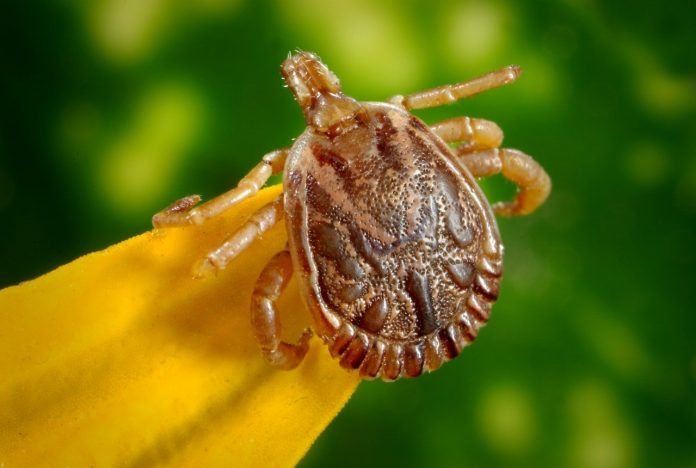Ticks are small spider like parasites, which can be found in long grass and heathland across the UK. They have flat, oval shaped bodies, which are grey or brown in colour and are most active in the spring and autumn months. Ticks feed off the blood of mammals and can grow up to a centimetre in size. Whilst ticks are not dangerous themselves, they are known to transmit a number of diseases, which can have long lasting effects on infected patients. As part of Lyme Disease Awareness Month, Dave Cumber Vets are taking the opportunity of informing people on how to identify, prevent and safely remove ticks from your pets.
Ticks can cause Lyme disease, which is a chronic and debilitating illness caused by a bacterial infection. It can be experienced by both humans and pets and has a number of serious side effects. Symptoms include swollen lymph nodes, fever, loss of appetite, lethargy and swollen joints, which can lead to arthritis. Lyme disease is detected by a blood test and if caught early enough, can be treated with a course of antibiotics.
Dave Cumber of Dave Cumber Vets said “Ticks are visible to the naked eye and can be easily detected by sight or touch. You will normally feel a hard pea shaped lump on your pets’ skin particularly around areas with sparse fur and good blood supply, such as head, ears, armpits, neck and feet. Removing ticks quickly and properly can prevent the spread of infection. If you are in any doubt please come into one of our surgeries and we will assess your pet”.
It is important to take the upmost care when removing a tick from your cat or dog. Never squeeze the body as this can force blood back into your pet and increase the risk of infection. Always be sure to remove the tick in its entirety, taking particularly care to remove the head and mouth. This will reduce the chances of infection or irritation.
It is difficult to limit exposure to ticks, however there are a number of treatments that can help to prevent your cat or dog being bitten. Preventative treatments work by releasing a chemical which is toxic to ticks into the fatty layer under your pets’ skin, which causes them to fall off or die. Some flea treatments can also prevent ticks. It is important to consult a veterinarian before giving your pet preventative medication to ensure they do not have any adverse reactions.
Dave Cumber went on to say “We advise making checking your pet for ticks’ part of your daily routine. After every walk run your hands over your dogs’ body and thoroughly check for lumps. Regular grooming can help with spotting ticks, especially if you brush against the direction of the hair. I recommend parting your pet’s hair and using a special tick removal tool to twist it off. These can be purchased in most pet stores and vets. It is advisable to wear gloves to avoid direct contact with your own skin and to dispose of carefully. After removing the tick treat your pets’ skin with an antiseptic wipe. Do not attempt to smother the tick with Vaseline or rubbing alcohol or burn the tick. These methods are old wife’s tales and will not work.”
If you have any concerns about any symptoms your pet is exhibiting or would like further information on tick removal or preventative measures please contact Dave Cumber Vets. Our friendly, knowledgeable and experienced team will be able to offer expert advice.
Full details can be found at the website www.davecumbervets.co.uk or on Facebook at facebook.com/davecumbervets







